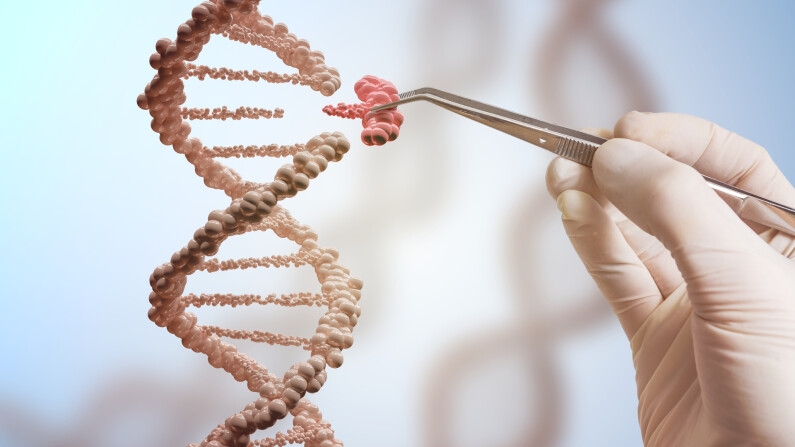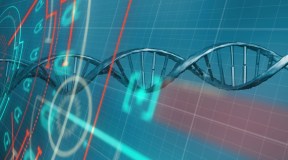Medicine does not stand still, even though many global issues have not yet been resolved. Dozens of discoveries are made every year have changed the very idea of what treatment a person can receive for various diseases. You don't believe it? We have compiled a list of 10 medical discoveries of the past 5 years that could become major milestones.
Of course, most of these achievements are just prototypes of future technologies, but the foundation has been laid. Yes, we are still waiting for a cure for cancer or a pill to avoid death, or at least to prevent old age. But this does not mean that there is nothing to admire about the work of modern scientists. Here are a few discoveries and innovations of recent years that have taken medicine to a new level.
Teixobactin - a breakthrough in the field of antibiotics
As of 2014, medicine had not developed any new antibiotics for the past 30 years. Diseases, meanwhile, have continued to progress and change. Their pathogens eventually learned how to develop immunity to the most commonly used antibiotics. It is not very pleasant to realize that once effective drugs will eventually become completely useless. It is not surprising that so many scientists have devoted their careers to synthesizing new drugs that could be effective in the fight against diseases.
A breakthrough, or rather a new era of antibiotics, came in 2015 when scientists developed a new class of drugs called teixobactin. The discovery of the new antibiotic was announced to the general public in January of 2015. In simple words, the drug blocks a virus' cells from becoming immune to the antibiotic so the effectiveness of the drug increases significantly in the long run. As of 2019, this medicine has already shown good results in the fight against some bacteria of tuberculosis and staphylococcus. However, a sufficient number of clinical trials in humans (100% would confirm the effectiveness of the drug) has not been conducted yet. Nevertheless, this is a huge breakthrough in the history of antibiotics. Hopefully, scientists will only need a couple more years to complete their research and fully realize its potential!
Artificial vocal cords

Modern scientists are paying a lot of attention to the construction of artificial cells which could possibly replace damaged organs, tissue, and even entire limbs. And it is understandable because such regeneration tools would bring humanity significantly closer to solving the problem of longevity, or even immortality. With this in mind, it is interesting to note that in 2015, the same year doctors developed teixobactin, others made a breakthrough in the field of artificial organs and grew new vocal cords in a laboratory.
A group of scientists achieved this by creating tissue similar to the mucous membrane of the vocal cords (namely, the part that vibrates to create your voice) using bioengineering technologies. True, the sound made by artificial ligaments is still a little distorted and is somewhat reminiscent of the sound of a robotic kazoo... but doctors are not bothered too much - they are sure that when they transplant the new ligaments into a living organism they will sound identical to real ones. When experimenting with mice, it was found that their bodies did not reject the new material - and this gives hope that the human body will fully accept artificial vocal cords as well.
Tasigna not only treats leukemia, but Parkinson's disease also
According to the latest data, about 4 million people worldwide are suffering from incurable Parkinson's disease. People with Parkinson's (mostly older people) experience serious neurological difficulties: muscle rigidity, tremors, and a chronic state of inadequate physical activity. These symptoms gradually lead to a person becoming unable to perform everyday household activities on their own or to maintain their basic standard of living. They eventually need constant help as these symptoms get worse.
The good news is that it is possible that humanity will finally develop a cure in the near future that will put an end to the suffering of Parkinson's patients and their families. In a new study, doctors found that Tasigna, the most effective drug for leukemia, is also the key to protecting against Parkinson's disease. By conducting an experiment on 12 volunteers, scientists identified significant improvements in cognitive and motor functions in each participant of the study. From this we can conclude that the drug could become an effective medicine not only in the fight against blood cancer but also against Parkinson's disease, which until recently was considered incurable. However, scientists are not in a hurry to make definite statements about their findings since the absence of side effects has not been fully proven. At the moment, not enough studies have been conducted to begin officially prescribing the drug to people with the disease. Many things still need to be done, but the discovery of additional properties of Tasigna is undoubtedly a huge breakthrough in the field of medicine.
3D printed chest

In 2015, Spanish doctors performed the world's first operation using 3D printing technology to implant an artificially created chest. The patient suffered from a rare form of sarcoma. The doctors simply had no other options but to completely remove the sternum and rib cage and create a new one. The procedure was very complicated and risky because not only one bone needed to be replaced, but a whole series of bones. In addition, these bones are often quite unique and are very different from person to person. The doctors had to work very carefully. Nevertheless, the operation was successful. After scanning the existing skeletal structure, the doctors decided to use titanium alloy as the material for creating the implant - strong and reliable, with a high degree of probability that it will not lose its qualities over time.
1.3 million dollars was spent on this highly effective, but risky operation. It was definitely worth it. The operation was successfully completed and the patient has almost completely recovered.
Transformation of stem cells into brain cells
Studies of the capabilities of stem cells have been ongoing for a long time now. And by 2019 scientists have learned how to transform stem cells into mature brain cells. Of course, the shape of such cells is not ideal: they cannot imitate brain functions, therefore, there is no talk of transplantation of such cells yet. However, this is a serious first step and a significant breakthrough in the science of stem cell research, which is already being used. For example, scientists can use transformed cells to seamlessly conduct scientific and medical experiments that cannot be performed on humans or animals for various reasons. These cells are also used to test drugs for the treatment of such serious diseases and disorders as schizophrenia, autism, Parkinson's, and Alzheimer's. Of course similar studies have been carried out before, but exclusively on animal cells. It is clear that the results of the new studies will be more accurate due to the similarity of the test material to the end users of the drugs (i.e. people), not to mention the fact that such experiments do not harm other living creatures.
DNA printing

DNA printing is a very important achievement of medicine. On the one hand, it is able to solve many existing problems. And on the other, it faces harsh criticism, since it raises many ethical issues.
DNA printing is a process in which DNA is placed in a common space. Only those strands that can make up a complete DNA chain are selected in order to meet the characteristics required for a client. If such printing became widespread, future parents could choose the desired hair color, eye color, and other features of their child. Companies involved in the development of DNA printing, such as Cambrian Genomics, believe that people in the relatively near future will be able to create various creatures, with the help of certain computer technologies, just for fun. By the way, at the present time this technology is seriously disputed, rejected, and criticized by the public since such “violence against nature” is for pure entertainment. That is, there is no practical benefit in it, while the ethical issues remain open.
To what extent the use of DNA printing is ethical and correct in the field of medicine is also not fully understood. On the one hand, it can help reduce mortality from various diseases, as well as bring a person closer to immortality; on the other hand, is this correct in terms of natural balance and natural selection? And how will it affect the spiritual component of society?
Leukemia treatment with immunotherapy
Scientists are tirelessly working on finding the most effective medicine for treating cancerous tumors. Three methods are traditionally considered: radiation therapy, chemotherapy, and surgery. But doctors are now seriously studying the effectiveness of immunotherapy; essentially stimulating the immune system to actively produce cells able to fight cancer. The most impressive results have been achieved in the treatment of leukemia.
Of course, total victory over cancer is still far away but the benefits of immunotherapy are undeniable: it is more natural and safer for human health. In contrast to chemotherapy or surgical intervention, which completely depends on the professionalism of doctors.
Contraceptives for men

Birth control should not be only a female issue. Until recently, only women could use contraceptives. Scientists from Japan have decided to rectify the situation and add a bit of equality to the sexes. However, this was done by accident. When they were testing certain drugs scientists found that a lack of PPP3CC protein leads to a decrease in reproductive functions. After several experiments in mice it was noticed that spermatozoa lose the strength and energy needed to break through the membrane and enter an egg after several applications of Tacrolimus and Cyclosporin A. After several more test cycles of taking the drugs, the mice completely lost their reproductive functions. However, they were able to return their reproductive systems to normal after stopping the drugs for only a week, without any serious risk to their health.
What does all of this mean? That birth control pills for men is not a fantasy, but quite a possibility in the near future. The magic pills reduce the risk of fertilization at an unwanted moment and allows both partners to fully control the circumstances of childbirth.
Artificial THC
Tetrahydrocannabinol is a chemical found in marijuana that has been used for many years to stabilize and improve the condition of people with cancer or AIDS. It is not surprising that chemists from the Technical University of Dortmund were seriously interested in the issue of creating important health components of marijuana under artificial conditions.
For example, scientists have already been able to develop a new type of yeast that will produce THC. Despite this achievement, it is not more efficient than just growing marijuana traditionally. However, scientists are confident that they will be able to create a more suitable technology for the efficient production of THC very soon.
Treatment of diseases with nanorobots
The future has come - University of California scientists have created microscopic robots that can transport drugs directly to the affected areas of the body. The experiments were carried out on mice - doctors delivered pieces of gold into the stomach of the animals. At the same time, of course, they carefully studied the body's response to such a technique and were happy to find that this did not cause any damage.
Humanity will have a more effective way to introduce drugs into a patient’s body by perfecting these nanorobots. It will no longer be necessary to wait for a drug to be absorbed by the body and act in the right way - nanorobots will deliver the medicine directly to the area of the disease and eliminate it.
Share this with your friends!





Be the first to comment
Please log in to comment